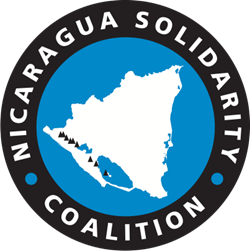Climate injustice is inseparable from social and economic injustice
Countries of the Global South, such as Nicaragua, have been impoverished by colonialism and centuries of subjugation to the needs and wants of the North. The resulting climate injustice is therefore inseparable from the multiple forms of social and economic injustice and inequality between and within nations.
In the case of the climate crisis, countries of the Global South – such as Nicaragua – and their most marginalized citizens suffer the most severe consequences of climate extremes for which they bear the least responsibility. These countries also lack the resources to confront the violence of poverty and the violence of the climate crisis.
Nicaragua Refuses to Sign Paris Agreement 2015 (COP21)
Nicaragua initially refused to sign the Paris Agreement, its representative Dr. Paul Oquist arguing that “doing so would mean being complicit in an Agreement that would lead to a catastrophic three degree increase in global warming because the largest polluters lack the political will and ambition” to address the most pressing issue facing the planet and humanity. Today, millions of people around the world would strongly agree with this view.
Calls by the Global South for reparations for the disproportionate loss and damage they have suffered have been strongly resisted by developed countries, historically responsible for the highest levels of emissions. In effect this means forcing countries of the Global South to bear the cost of climate extremes through loss of lives, livelihoods and environmental destruction.
After COP21 Oquist stated: “The Paris outcome is similar to the rescue by governments of the banks that caused the 2008 financial and economic crisis, passing the bill for the crisis on to workers, pensioners and taxpayers. In Paris, the rescue was by the COP21 governments of the countries which have caused global warming, passing the cost to those least responsible who will die in the largest numbers unable to make good their losses, much less adapt to a change in climate increasing in intensity as the century wears on.”
Calls by the Global South for reparations for the disproportionate loss and damage they have suffered have been strongly resisted by developed countries.
Nicaragua later ratified the Paris Agreement in 2017.
Nicaraguan Policies on Climate Change
Since 2007, the Nicaraguan government has stated that climate injustice is inseparable from social and economic injustice and the struggle against climate change and policies in favor of Mother Earth have once again become central to national priorities.
To that end, the Nicaraguan government has formed Climate Change Secretariat of the Presidency of the Republic, the National System for Climate Change Management and in 2022 by Presidential decree created a National Climate Change Policy.
Nicaragua has participated in 15 COP, focusing participation on the principles of shared but differentiated responsibility and climate justice and reparations. Nicaragua has had a vice-presidential role at COP20, COP21, COP27 and COP28.
Nicaraguan Actions to Mitigate Effects of Climate Change
Nicaragua is #8 in the world for transition to renewable energy generation.
Nicaragua has changed its energy matrix from 75% fossil fuels in 2006 to 70% renewable energy generation in 2023.
Over that same period, Nicaragua has installed 16,345 individual solar panel systems, principally on the Caribbean Coast where grid access is difficult and previously electricity was only provided sporadically by poorly maintained diesel generators.
Since 2007 Nicaragua has increased in forested areas by 254,104 hectares and in 2023 alone Nicaragua planted 26 million trees. During this period, Nicaragua has created 142 arboretums, 19,309 nurseries and trained 3.6 million people in environmental values and protection of our Mother Earth.
Over 17 years there have been 57% fewer forest fires, thanks to actions taken by national plans to prevent forest fires and the promotion the natural regeneration of 1 million hectares of forest. Nicaragua has created 97 forest fire brigades and 1,274 participants in environmental observer’s network.
Since 2007, Nicaragua has helped 9,000 families establish a production model for the cattle value-added chain that is efficient and environmentally sustainable and is resilient to climate change.
Nicaragua’s Army has a special brigade of forest protectors, dispatched to large reserve areas to stop illegal logging. The Army also has a special brigade of turtle protectors, annually dispatched to beaches where sea turtles lay eggs. To date they have protected 3.2 million turtle nests and released 15.7 million live baby turtles into the ocean.
(Source: Parts of this article were adapted from NicaNotes. Statistics from GRUN Annual Reports 2024)
Articles
2024
Yuill, Helen. “Climate Justice = Holistic Transformation, Not Tinkering Around the Edges.” NicaNotes, 21 March 2024. carbon neutrality, UN Green Climate Fund (GCF), renewable energy, Valdrak Jaentschke, Dr Paul Oquist
Nicaragua, COP26, Climate Justice and Reparations, February 11, 2021, by Helen Yuill
2023
“What We Learned about AgroEcology from Nicaragua.” NicaNotes, 11 May 2023 by Rick Kohn. En español aquí. University group learns about agroecology and food sovereignty in rural areas in Nicaragua. monoculture, nutrient cycles, chemical fertilizers, pesticides, genetic engineering
Videos
Webinars & video resources on Climate Change in Nicaragua



